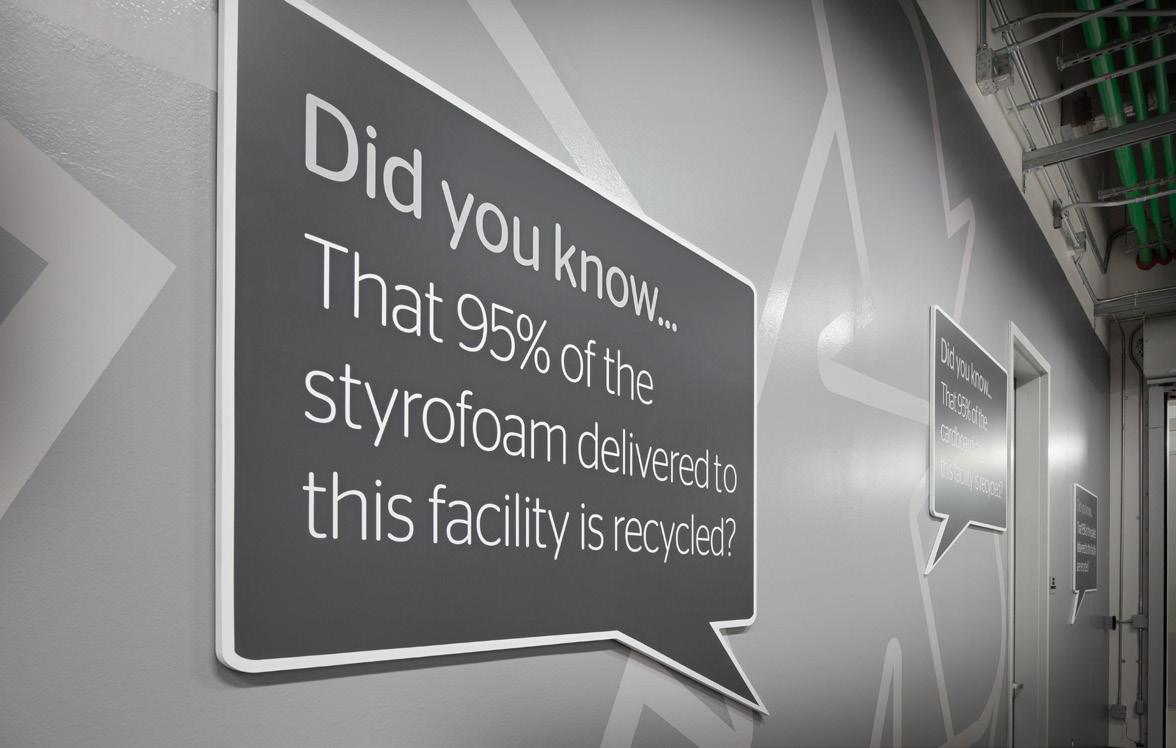
2 minute read
GRAPHICS CAN PLAY A LEED ROLE
by Little
By Kelley Deal
As an environmental graphic designer at a multidisciplinary firm, I’m always evaluating the importance of aligning a client's brand communication efforts with the overall architectural narrative of their space. This alignment results in a cohesive spatial experience that is more relevant, memorable and effective.
More often than not, we see clients aligning themselves with environmental sustainability. There are countless ways to support this from an architectural standpoint - HVAC calculations, sunlight + wind considerations, low-flow this and that, and thousands of eco-friendly flooring, furniture and fixtures - but, as graphic designers, how do we ensure this sustainability is reflected in the cohesive experience?

We’re looking at two ideas: first, considering the environmental impact of graphic design products throughout their entire life cycle (raw materials > manufacturing > use > disposal), and second, how storytelling via graphics can perpetuate the success of an organization's integration of sustainability into their core values, culture and environment.
Fabricators and vendors are now embracing and realizing that while it might be less detrimental than a high-VOC flooring spec, materials for brand communication matter, too. As designers we’re working toward a consistent audit of the amount of materials required for production, using materials made with recycled, post-consumer waste, printing with low-VOC inks, minimizing the amount of transport required, and which vendors might use renewable energy. On the flip side, however, integrated brand design can take years of thoughtful attention to green building from a proud moment between the design team + the client to a public-facing recognition of stewardship and forward-thinking values.
Walking into a space, the identity, mission and personality of that company should be immediately reinforced. Branding an environment transforms a building from a container or shell into a piece of the brand puzzle. We’ve seen (and completed) projects that do an excellent job at walking a visitor through the space and the story, and integrate those sustainable attributes into everything from landscaping to embedded signage and graphics all the way to LEED-specific iconography. By getting involved early in projects, our goal is to help clients determine the easiest, greenest, and most cost-effective way to ensure that the opportunity to tell their story of sustainability doesn’t get left behind.


Kelley Deal, LEED AP ID+C, is an Art Director in Brand Communication & Design at Little and can be reached at Kelley.Deal@littleonline.com.









